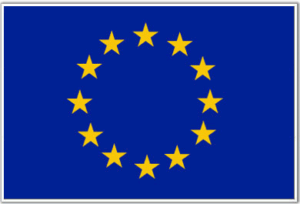The Commonwealth of Independent States (CIS) is an intergovernmental organization that consists of nine member states from the former Soviet Union. The CIS has its own distinctive flag, which represents the unity, cooperation, and shared heritage among its member countries. In this article, we will explore the flag of the CIS, its design, symbolism, and significance.
CIS Flag Facts
| Fact | Description |
|---|---|
| Design | A rectangular flag with a blue background and the CIS emblem in the center |
| Emblem | The CIS emblem features a white map of the member countries, surrounded by 12 yellow stars and wheat stalks |
| Blue Color | Represents the common aspirations, peace, and cooperation among member states |
| White Map | Symbolizes the unity, shared heritage, and historical ties of the member countries |
| 12 Yellow Stars | Represent the nine member states of the CIS, as well as the three associate members |
| Wheat Stalks | Symbolize agricultural potential and the significance of agriculture in the member countries |
| Flag Dimensions | The official CIS flag has a ratio of 1:2, where the length is twice the height |
| First Use | The CIS flag was officially adopted on December 22, 1991, after the dissolution of the Soviet Union |
| Flag Protocol | The CIS flag is displayed during official CIS events, conferences, and meetings |
Design and Symbolism
The CIS flag features a blue background, symbolizing the common aspirations, peace, and cooperation among the member states. Blue also represents stability and the desire for progress within the organization.
At the center of the flag is the CIS emblem, which consists of a white map depicting the member countries. The white map symbolizes the unity, shared heritage, and historical ties among the member states. It reflects the common history and cultural background that bind the CIS nations together.
Surrounding the map are 12 yellow stars, representing the nine member states of the CIS and the three associate members. The stars symbolize the unity, cooperation, and collaboration among these countries. They signify the desire for mutual understanding, peace, and prosperity within the CIS community.
Additionally, the emblem features wheat stalks, which symbolize the agricultural potential and the significance of agriculture in the member countries. Wheat represents the abundance of resources and the agricultural heritage shared by the CIS nations.
Significance
The CIS flag holds significant symbolism as it represents the unity, cooperation, and shared heritage among its member countries. It serves as a visual reminder of the organization’s mission to foster mutual understanding, peace, and collaboration.
The blue background of the flag represents the common aspirations and the commitment to peace and stability within the CIS. It signifies the desire for progress, development, and prosperity among the member states.
The white map on the emblem symbolizes the shared heritage and historical ties of the member countries. It reflects the common history, culture, and traditions that connect the CIS nations.
The 12 yellow stars surrounding the map represent the unity and cooperation among the member states. They symbolize the collective efforts, mutual understanding, and shared goals of the CIS community.
The wheat stalks in the emblem signify the agricultural potential and the importance of agriculture in the member countries. They highlight the significance of the agricultural sector in the economies and livelihoods of the CIS nations.
Other Flags
 |
 |
 |
 |
| Flag of the United Nations | UNESCO FlagInternational Olympic Committee (IOC) flag | Olympic Flag | |
 |
 |
||
| ASEAN Flag | Flag of the Organisation of Islamic Cooperation |

